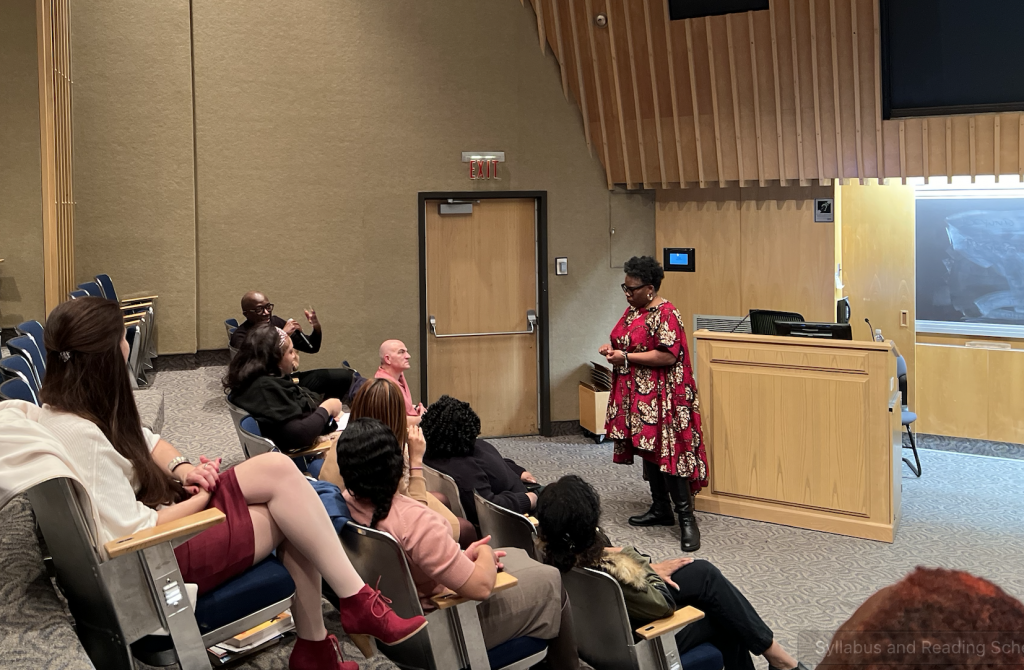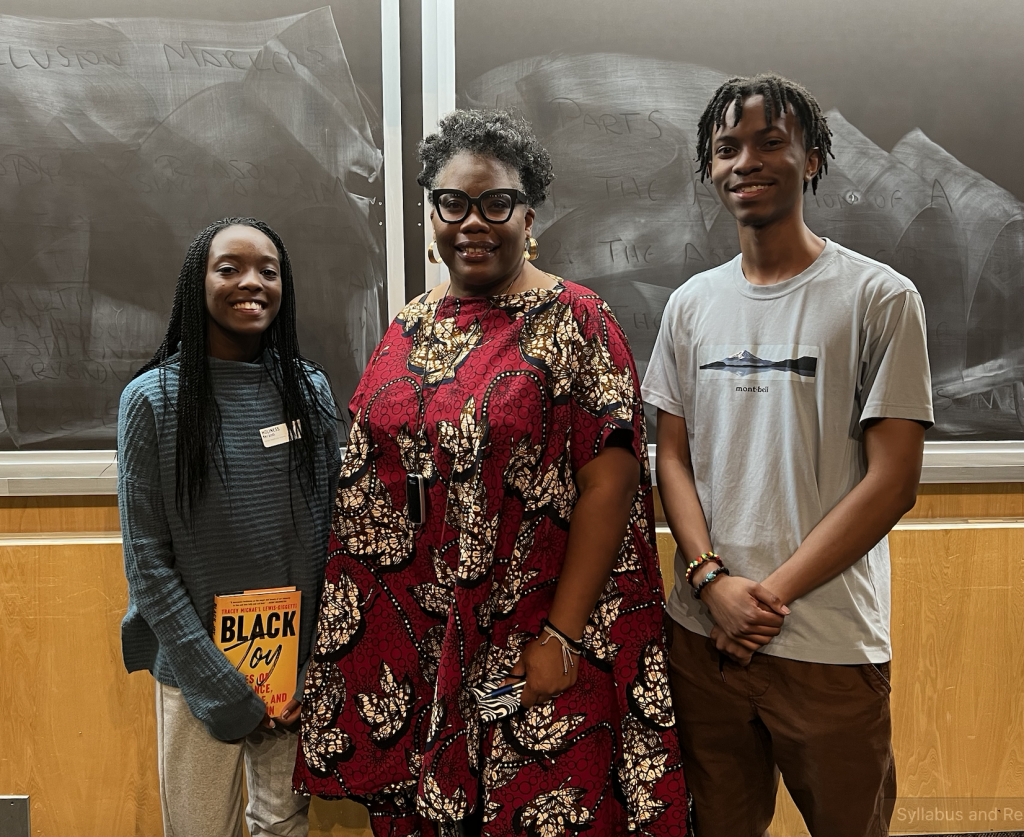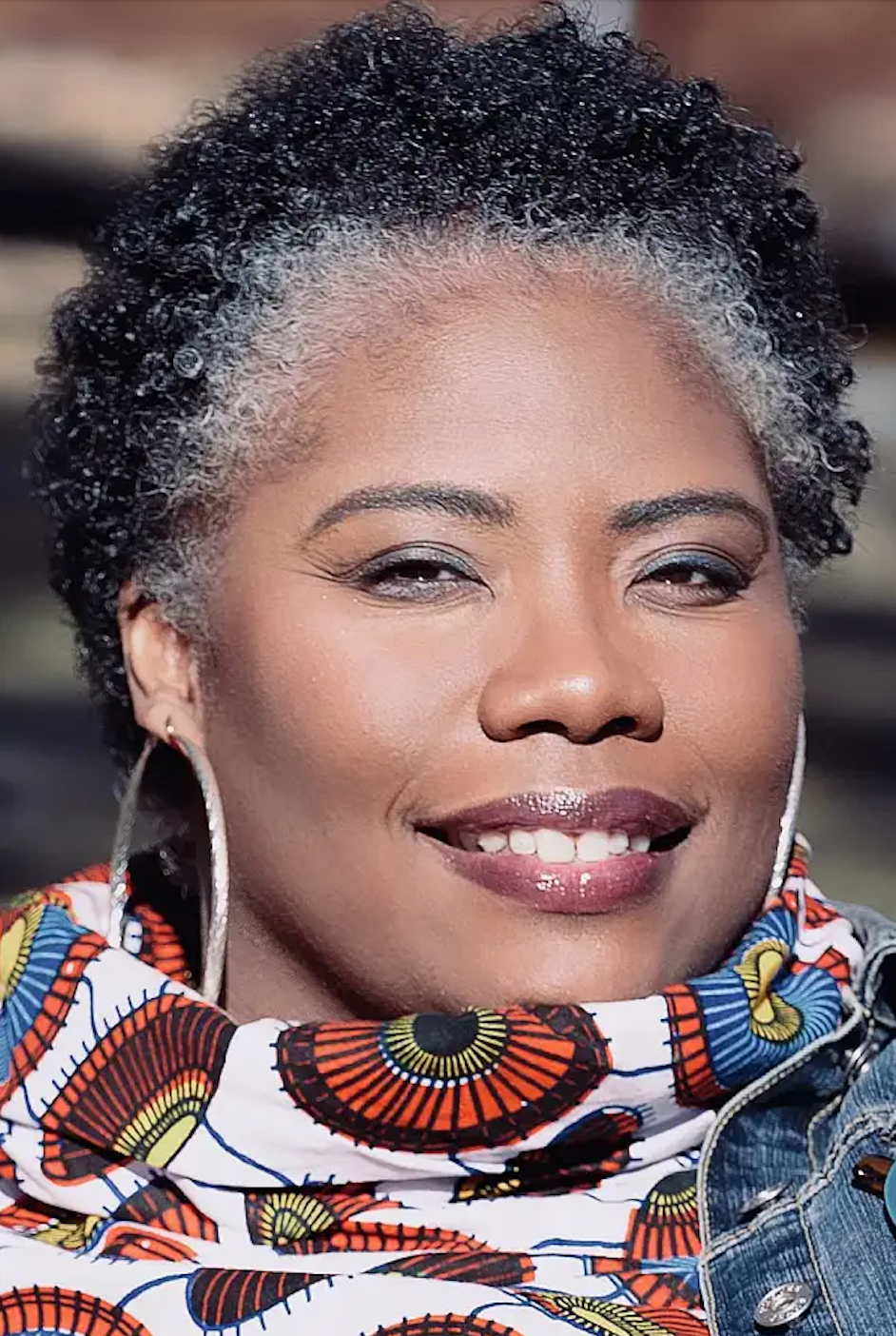Each academic year, the Griot Institute identifies a question or issue of interest that’s central to the continued study of Black lives and cultures and develops a series of programs to explore these questions from multiple disciplinary perspectives and dimensions. Entitled “Joy: Centering and Embracing the Fullness of Black Humanity,” the theme for this year’s series takes up the question posed by Language and Literature Professor Moradewun Adejunmobi: “What would studying African pleasures, beyond censorious judgment, look like?” Further, the Griot Institute asks, “[i]f we extend this question to the global African Diaspora, what might Black joy look like beyond hypercritical assessment? What would happen if we were approving, sympathetic and admiring of Black joy?”
This semester-long inquiry of Black joy was kicked-off on Wednesday, February 7th by Tracey M. Lewis-Giggetts – a writer with 23 books published, including several collaborations with numerous high-profile authors, and a national thought-leader on topics related to race/social justice, healing, and faith/spirituality. Aptly put, Lewis-Giggetts lecture was titled “Black Joy: A Strategy for Healing, Freedom and Reckoning.”

Over the course of an hour, Lewis-Giggetts told the story of the duality of Black joy – at once an embodied, cultural expression of pleasure, exuberance, and jubilation and an enduring reminder of all that’s been stolen from Black people. Drawing upon her own experiences and those of others, Lewis-Giggetts spoke of the transformative power of joy in healing both individual and collective trauma. She recounted personal tales of resilience, highlighting how she found and nurtured her own Black joy in the wake of losing a family member to racial gun violence, and emphasized the importance of Black joy as a form of collective resistance and liberation too. “How does joy heal, restore, and protect,” Lewis-Giggetts asked us, “what does joy feel like in [your] body?”
Later in the night, she emphasized the need for spaces where Black joy can flourish without the weight of judgment or criticism, where it can be celebrated as a fundamental aspect of Black humanity. She encouraged us to ask our institution(s) how do they (or how do they not) provide the physical, emotional, and psychological safety that Black joy needs to survive.
As the event concluded, Lewis-Giggetts took various questions from the audience such as: “How do you define joy,” “What is the relationship between joy and power,” and who should Black joy be shared and celebrated with? It was more than evident that attendees at Lewis-Giggetts’ lecture left the event with a renewed sense of purpose and commitment to centering Black joy in their own lives and communities.

